History & Geology
Undiscovered Placer Deposits in Alaska
November 2010 by Jim Halloran
Being an Alaskan geologist and prospector, I feel qualified to address the question of whether new placer gold discoveries are possible here in the 49th state. I say, “Damn right!” I don’t say this so much due to receding glaciers exposing unseen ground, which is certainly possible. Melting glaciers leave a mess of rock debris known as moraine and outwash that is likely to bury the auriferous deposits.
Here is how I see the main opportunity for undiscovered placer gold. Imagine you are a prospector 125 years ago exploring the wilds of the Alaska territory. There are no roads, maps, nor aerial photographs. You must get around by traveling on the rivers and paddling upstream. You must go upstream because you came by ship at sea level. So you paddle and portage upstream into the hills and mountains. Each tributary stream you come to must be tested for gold. You hike upstream a bit, dig a hole in a gravel bar and take pan samples to see if any gold seems to be coming down that stream. If there is little to no gold, you head on up river. If enough gold is in your pan, then you go up that tributary and maybe make a discovery.
Remember back during the gold rush, you had no maps or aerial photos—not even Google Earth! Figure 1 is a USGS map published in 1913, which was prepared by properly trained surveyors. The map in figure 1 was made 20 years after the prospecting trip and it only shows one large lake and no bogs.
Figure 2 is a USGS map made a half century later of the southern Cache Creek Mining District, which presents many large lakes, hundreds of small lakes and a mind-boggling number of bogs that are actually in the rectangle in Figure 1.
Nobody in those days knew what was upstream, out of view. It was possible and often probable that there was a lake and bog upstream beyond their knowledge. A lake is a big sediment trap. Any gold that washed into the lake would be forever trapped there. It is possible a rich placer stream could be feeding into a lake and no further. How many lakes are in Alaska and the Yukon? Thousands or perhaps tens of thousands!
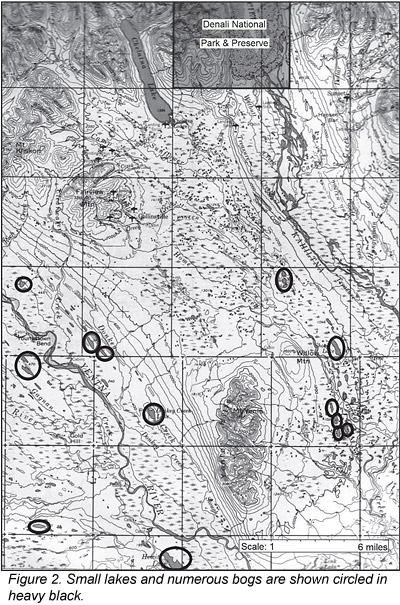
What is a bog? A bog is a vegetation-filled lake. How many bogs are there in Alaska and the Yukon? Hundreds of thousands, perhaps. Streams flowing out of bogs and lakes are usually sediment free. If there is any stream sediment, it is clay-sized particles in suspension. Nothing of any size escapes a large sediment trap like a lake or bog. It is likely that gold rush prospectors never went far enough up the tributary to reach the bonanza.
Lakes and bogs are more prevalent in glaciated regions because glaciers rearrange stream drainages drastically and can leave many lakes in their wake to become sediment traps. Unglaciated landscapes have fewer lakes because they have had millions of years to erode away lakes.
Another scenario for undiscovered placer gold is the Valdez Creek placer model. Valdez Creek is a rich placer stream discovered in the Alaska Range during the early gold rush days. It was discovered by prospectors working their way up the Susitna River in the manor described previously. They came to Valdez Creek, found good values, and followed the gold upstream to where they suddenly ran out of the yellow metal.
The Valdez Creek prospectors then searched the hillsides until they found the buried Tammany Channel, which they drift mined quite profitably (Figure 3). The Tammany is an auriferous stream channel that was buried by Ice Age glaciers. After decades of abandonment, a mining company began exploring for an extension of the Tammany Channel with geophysics and drilling rigs about 30 years ago. They found a rich channel. To their surprise, it was not the Tammany, but another rich channel. Neither of these channels could be seen from the surface because they were completely
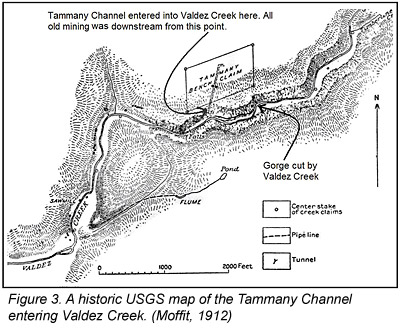 buried with glacial debris like outwash gravels. The old prospectors at Valdez Creek would have had nothing to discover if the creek had not intersected the old Tammany Channel. These two very rich channels would be undiscovered today if Valdez Creek had not essentially made the discovery possible. There are millions of acres of glacial outwash in the northern Rockies and many more opportunities for the Valdez Creek model to exist.
buried with glacial debris like outwash gravels. The old prospectors at Valdez Creek would have had nothing to discover if the creek had not intersected the old Tammany Channel. These two very rich channels would be undiscovered today if Valdez Creek had not essentially made the discovery possible. There are millions of acres of glacial outwash in the northern Rockies and many more opportunities for the Valdez Creek model to exist.The Cariboo Mining District in northern British Columbia is a similar glaciated mining district. These conditions don’t just apply to Alaska and the Yukon; they apply to western Canada and even to the mountainous western United States.
Remote areas of the northern Rockies have not been thoroughly prospected for placer gold deposits. Today’s prospector has the advantage of using accurate maps, aerial photos and even geologic maps to help in explorations. Not only that, we have airplanes, helicopters, all-terrain vehicles, satellite phones and many other modern gizmos like geophysical tools to make our job easier and more effective.
_______________
Sources
- Capps, S.R., 1913, Gold Placers of the Yentna District, US Geological Survey Bulletin 534.
- Moffit, F.H., 1912, Headwater Regions of Gulkana and Susitna Rivers, Alaska, US Geological Survey Bulletin 498.

The Rochester Mining District of Nevada
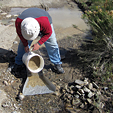 Only the richest ores could be worked and shipped off for processing at a profit. As a result, early mining in the southern part of the Humboldt Range was short-lived. In the 1880s, placers were discovered in Spring Valley and American Valley on the east side of the range...
Only the richest ores could be worked and shipped off for processing at a profit. As a result, early mining in the southern part of the Humboldt Range was short-lived. In the 1880s, placers were discovered in Spring Valley and American Valley on the east side of the range...
The Goldfield Mining District, Nevada—Part I
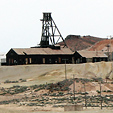 An example of some of this extraordinary ore was a lot of about four tons from the Florence mine during the last days of a lease that averaged over 300 ounces of gold per ton.
An example of some of this extraordinary ore was a lot of about four tons from the Florence mine during the last days of a lease that averaged over 300 ounces of gold per ton.
The Amazing Mineral Tourmaline
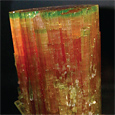 It is a gemstone, and yet it is also closely associated with many types of metal ores. It's valuable itself but often points toward other valuable minerals—that is certainly something prospectors want to know more about!
It is a gemstone, and yet it is also closely associated with many types of metal ores. It's valuable itself but often points toward other valuable minerals—that is certainly something prospectors want to know more about!
Understanding Large Gold Deposit Types: Discovering New Mines
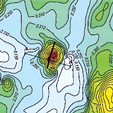 The other opportunity that I see is in seeking unusual types of deposits. Specifically, the prospector would be searching for the stuff no one (or almost no one) is searching for. These deposits are effectively hiding in plain view.
The other opportunity that I see is in seeking unusual types of deposits. Specifically, the prospector would be searching for the stuff no one (or almost no one) is searching for. These deposits are effectively hiding in plain view.
Gold Geochemistry: Where Does Gold Come From?
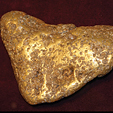 Prospectors often wonder why gold deposits in veins like it does. Why is one vein rich while another is barren, even though they are only a few hundred feet apart?
Prospectors often wonder why gold deposits in veins like it does. Why is one vein rich while another is barren, even though they are only a few hundred feet apart?
Why Did This Silver Mine Close? - Pt III
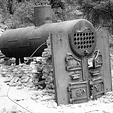 Narrowing down a closure date will allow you to check the commodity price during that time and possibly confirm that a low price, rather than a lack of ore, was the driving force that closed the operation.
Narrowing down a closure date will allow you to check the commodity price during that time and possibly confirm that a low price, rather than a lack of ore, was the driving force that closed the operation.
Benches and Fossil Placers
Unfortunately for us mortal humans, we have a poor perspective on geologic time. When we look at a landscape such as a stream valley, we see it only in two, or at the most, three dimensions. We have poor comprehension of the valley’s fourth and most important dimension—time.
Subscription Required:
The Bawl Mill
• Legislative and Regulatory Update
• The Jenkins Mine Project, Conclusion—Recovery Operations & Summary
• Gold of Plumas County
• Recent Prospecting in Plumas County
• Prospecting for Nickel Deposits
• Detecting My Way Across Australia—Pt II
• Detectors Versus Pans
• Check The Box For Tax Savings
• Mining Stock Quotes & Mineral and Metal Prices
Free:
Melman on Gold & Silver








